Case Study
Challenging New Heights: Fire Damage Restoration in a New York City Cathedral
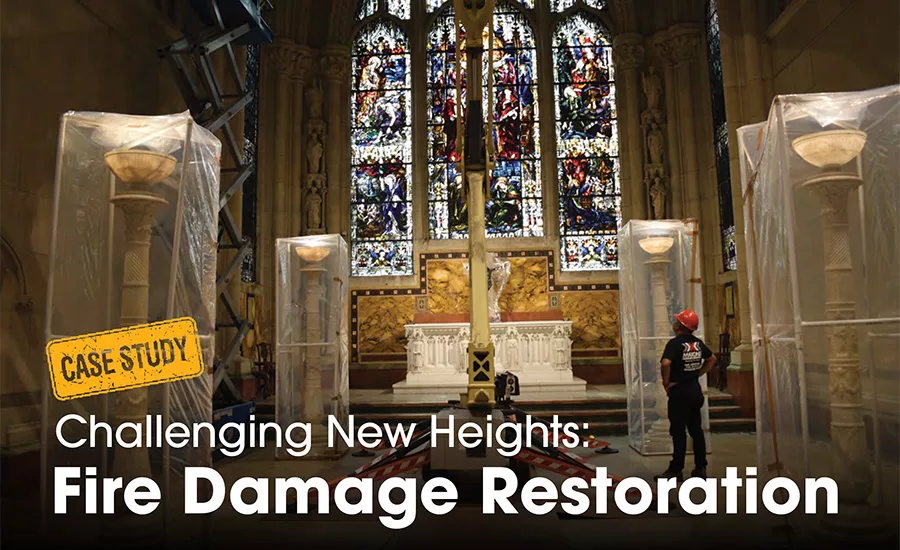
Photos courtesy of Maxons Restorations
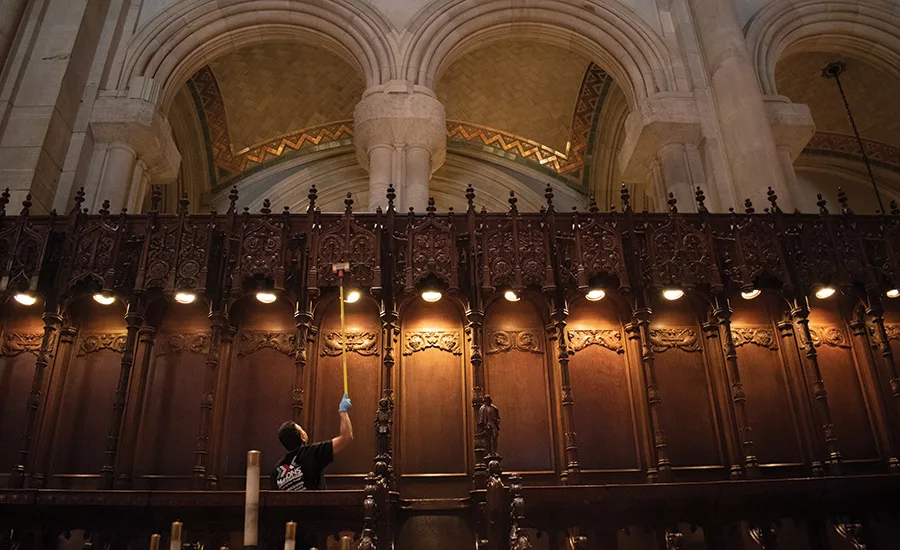
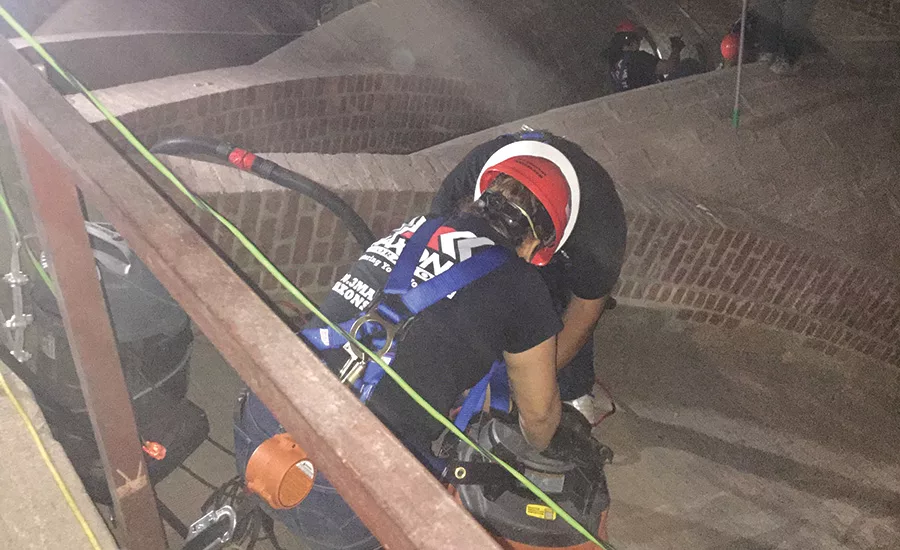
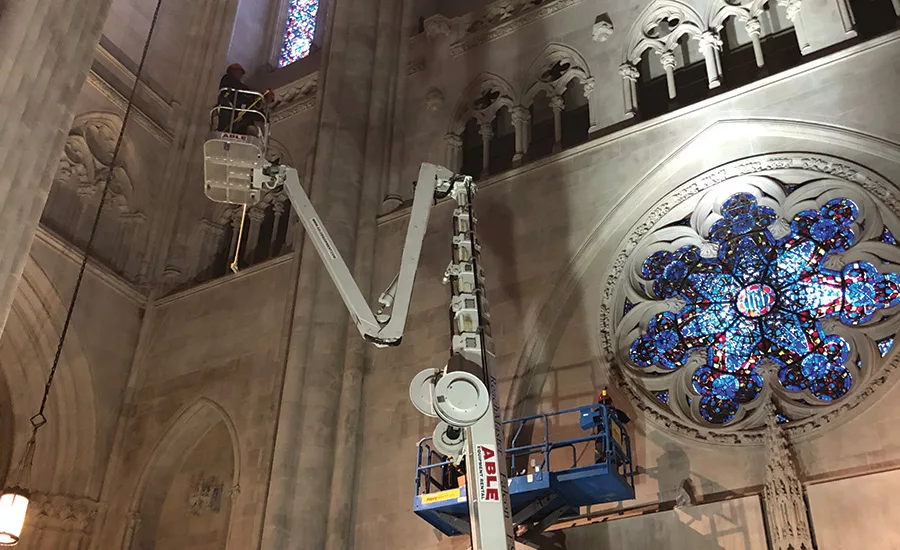
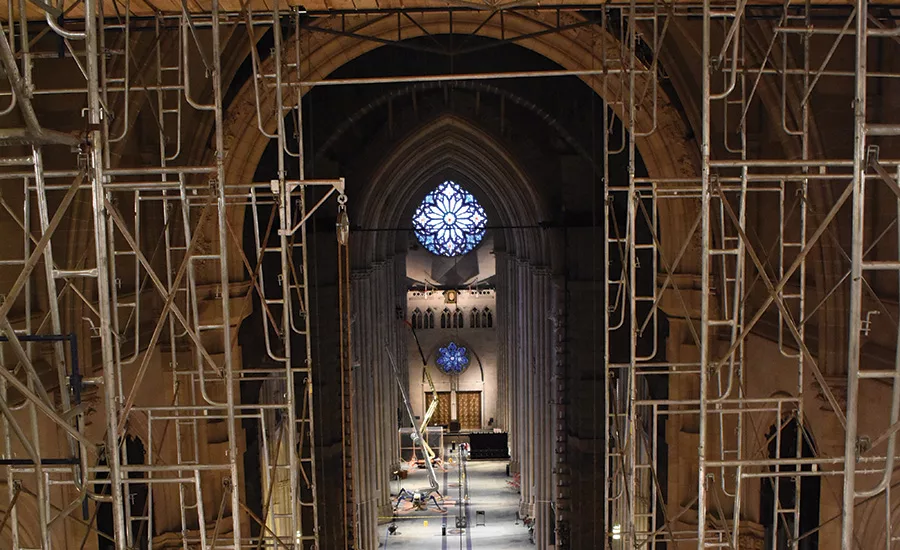
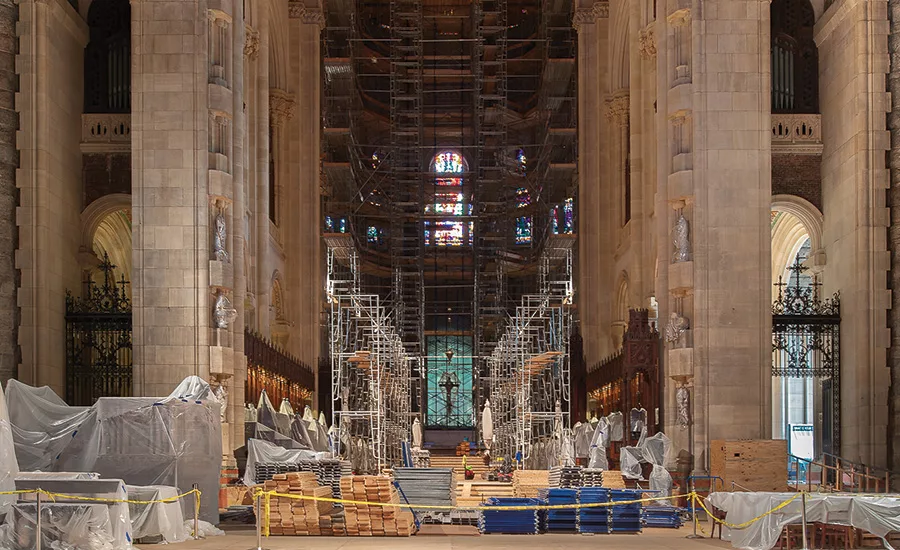
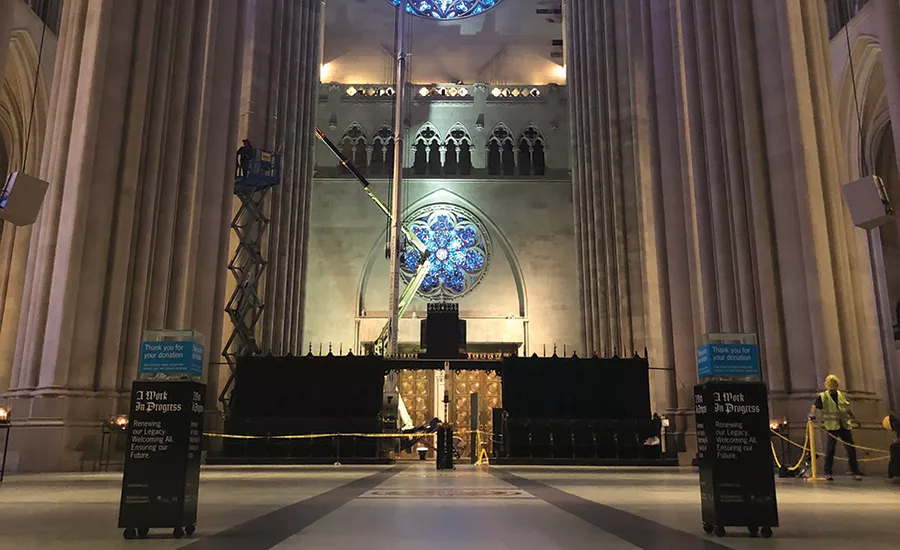
The Cathedral of St. John the Divine is a landmark in Upper Manhattan. Built in 1892, the building is among the top five largest church buildings in the world, and according to the church’s website is actually the largest cathedral in the world. The idea to build this cathedral dates all the way back to 1828, though the New York Legislature did not grant its charter until 1873, and the 11.5 acre site was not acquired until 1887. Today, the church holds more than 30 services a week, the kitchen serves more than 25,000 meals annually, and the buildings plays host to many community and school programs.
In its more than 125-year history, St. John the Divine has suffered at least two fires. The first was in December of 2001, the second happened on April 14, 2019 – Palm Sunday. This is where our case study begins.
Fire on Palm Sunday
The fire started in a pile of artifacts in the lower crypt. According to David Watts, a Senior Project Manager at Maxons Restorations, every surface was affected by contamination, even though the fire itself was contained. The Maxons team had five days (the window between Palm Sunday and Good Friday) to clean and restore as much of the 121,000 square foot cathedral as they could.
Working in conjunction with The Building Conversation Association, a small army from Maxons got to work dry cleaning as much as they could. Due to the structure being a historical landmark, degreasers could not be used on certain surfaces, and there were other protocols that also had to be followed.
“There were 80 people working five days that week in two shifts, cleaning the school and sanctuary,” Watts recalled. “During phase one of the project, our goal was to get the school in the basement back up and running, and clean everything from 10-feet-high and down so touchpoints were clean for Good Friday.”
Maxons had good partners they were able to call on who sent in backup help. Thanks to their hustle and key partnerships, the church was able to be reopen on Holy Thursday, the day before Good Friday, ahead of schedule.
After Holy Week
After Holy Week, the more tricky work got started. On the Maxons team’s to-do list to clean and restore were: granite stone, limestone walls, large stained glass windows, the Rose Window which is considered a national treasure, some fine art, and an organ.
The central dome in the cathedral stands at 160-feet high. Due to the weight of most lifts, it was tricky for the Maxons team to find one light enough to put on the fragile floor that would reach the height the team needed.
“The dome was big enough you could fit the Statue of Liberty inside,” Watts said. “They had a fire in 2001, and the dome had still not been cleaned and was an outstanding insurance project.”
With the help of a structural engineer, they were able to figure out just how much the floor could hold, and how to get the job done - including erecting 120,000 pieces of scaffolding, a truly massive feat.
Art specialists came in to handle any fine art that was on site, and most items were removed and put into a vault for storage. The organ is also awaiting care from an expert. Watts said the organ has something like 10,000 pipes and will most likely be disassembled and sent to a specialist. That restoration process could take several years to complete.
While all the cleaning was being done, air scrubbers with charcoal filters were run to help combat the smoke odor. The ducts were also cleaned, meaning the two to three-foot-wide floor grates had to be carefully marked off and monitored for safety reasons.
Throughout the project, which was slated to be completed in full by Thanksgiving, the Maxons team had several instances where the timeline was stressed. On several occasions, they had to stop work all together, including when there was a funeral for someone famous, a 9/11 memorial service, and even organ practice.
Coordination & Communication
Coordination and communication were key, and something Watts and his crew were quick to get into place. There were weekly meetings with every department in the Cathedral – the music department, logistics, facilities, clergy, and so on. Watts said most Wednesday mornings, there were 30 or more people crowded into the room for the weekly update.
“Overall, it was a good project,” Watts reflected. “Communication is key in a project like this. You have to have a partnership with the facility. Every project has its own logistics and challenges; you just have to take your time and figure out how you can accomplish these goals.”
Watts said had they just bulldozed through the project, it would have been very disruptive to the religious facility. Instead, Maxons created a partnership and process that worked for everyone, and resulted in a very happy customer.
Looking for a reprint of this article?
From high-res PDFs to custom plaques, order your copy today!









